INTRODUCTION:
“The nature of yoga is to shine the light of awareness into the darkest corners of the body.” – Jason Crandell
First of all,
Yoga programs would only be complete with standing poses, which provide numerous mental and physical health advantages. They improve posture, flexibility, strength, balance, and focus. This manual examines a variety of standing poses, explaining their benefits and how to incorporate them into your practice properly.
Yoga is perfect for enhancing balance and standing positions like trees, chairs, and mountains are quite helpful. These poses help to create a grounded connection to the breath, body, and mind, in addition to strengthening and stabilizing the body. Whether you’re a novice or a seasoned practitioner, adding these poses can improve your general yoga flow and help you reach particular fitness objectives.
For example, adding basic standing poses to your practice, like the ones below, can increase ankle stability and strength, which lowers your chance of injury when running or doing other strenuous exercises. Explore eight standing yoga positions that are suitable for beginners to begin with, and learn how these poses can enhance your practice
The Sanding Yoga poses has several advantages.
1. Build Physical Stability and Strength:
- Use several muscle groups at once.
- Encourage equilibrium and cooperation.
- Straighten your posture.
- lower chance of harm.
- improve general health.
2. Strengthen lower body muscles.
- Concentrate on your quads, hamstrings, glutes, and ankles.
- Increase equilibrium and core stability.
- Improve flexibility and movement.
- For instance, mountain pose is a great way to enhance your posture.
3. Strengthening Pose:
- Put your attention on developing your muscles’ strength.
- Chair, warrior, and crescent lunge are a few examples.
- Chair pose works the quads and glutes.
- The crescent lunge works the hamstrings, quads, and glutes. It also improves balance by using the inner thighs and hip flexors.
4. Balancing Poses:
- Stress stability and equilibrium.
- Aeroplane, warrior III, eagle, tree, and dancer’s posture are a few examples.
- Usually done on one foot, this exercise works the ankle and core muscles helps runners strengthen their ankles.
4. Lengthening Poses:
- Increase your range of motion and lengthen your muscles-forward fold, for instance.
- Pay attention to hamstring stretches and lengthening.
- Promote muscle soreness relief and post-workout recuperation.
5. Core Engagement:
- Crucial to keeping the torso upright.
- Aids in the avoidance and treatment of lower back discomfort.
6. Overall Advantage:
- Improve flexibility, balance, strength, and stability.
- Doable and readily available
The Distinction Between Seated and Standing Yoga Positions
1. Body Position (Standing Pose):
Adopt a standing posture.
Seated Poses:
Performed on a mat, either sitting or lying down.
2. Muscle Engagement:
Standing Poses:
- Focus primarily on the muscles of the lower body (hamstrings, quads, ankles, and glutes), using the core to provide stability.
- Maintaining balance and keeping the torso upright require core activity.
Seated Poses:
- To enable deeper twists and stretches, concentrate more on lengthening and flexibility.
3. Duration of Pose
Standing Pose:
These poses are usually held for shorter periods because they involve strength and balance.
Sitting Positions:
- Allows for longer holding times, which promotes flexibility and deeper stretches.
- Lengthier hold times aid in improving respiratory control and relaxation.
4. Purpose and Benefits:
Standing Poses:
Feel more active.
Put your attention towards developing stability and strength.
Warrior series, for instance.
Seated Poses:
- Encourage grounding and relaxation.
- Permit a closer bond with breathing.
- Frequently used to open up the body and stretch at the start or finish of a lesson.
5. Example Comparison:
Sitting vs. Standing Prayer Twist:
Standing twists emphasise strength and balance and are held for shorter periods.
Seated twists improve flexibility by enabling a longer, deeper stretch.
What Should Beginners Know About Standing Yoga?
Standing poses are a key component of yoga, offering a solid foundation for regular practice.
Start with Grounding Poses
- Focus on poses that connect both feet to the ground and synchronize breath with body movement.
- Mountain Pose is a foundational pose that helps you get comfortable with stability and grounding.
Progress with Balance Poses
- As you gain strength, try balancing poses like -Tree Pose.
- Modify the pose by placing your free foot on your ankle, calf, inner thigh, or even on the ground—avoid the knee.
Modify Poses to Suit Your Fitness Level
- Choose variations or modifications that provide support and challenge you appropriately.
- Progress at your own pace and gradually add more elements to the poses as you become comfortable.
Use Props for Support
- Utilize yoga blocks and other props to aid in accessing and holding poses, especially balancing ones.
- Props can enhance your practice by providing additional support and focus on specific areas.
8 Standing Yoga Poses to Try
Now that you understand the benefits of standing poses, here are eight foundational postures to get started:
Mountain Pose (Tadasana)

– Benefits:
Improves posture, balance, and body awareness; strengthens core, glutes, knees, and ankles.
How to Perform:
- Stand with toes together and heels slightly apart.
- Spread your toes and distribute weight evenly through both feet.
- Engage your core, tuck your hips slightly, and point your tailbone down.
- Relax your shoulders, roll them back and down.
- Inhale, reach your arms overhead, press down on your feet.
- Option to place hands in prayer position, overhead, or by your sides.
- Breathe deeply and slowly through your nose.- Maintain the pose for 3 to 5 breaths.
Chair Pose (Utkatasana)
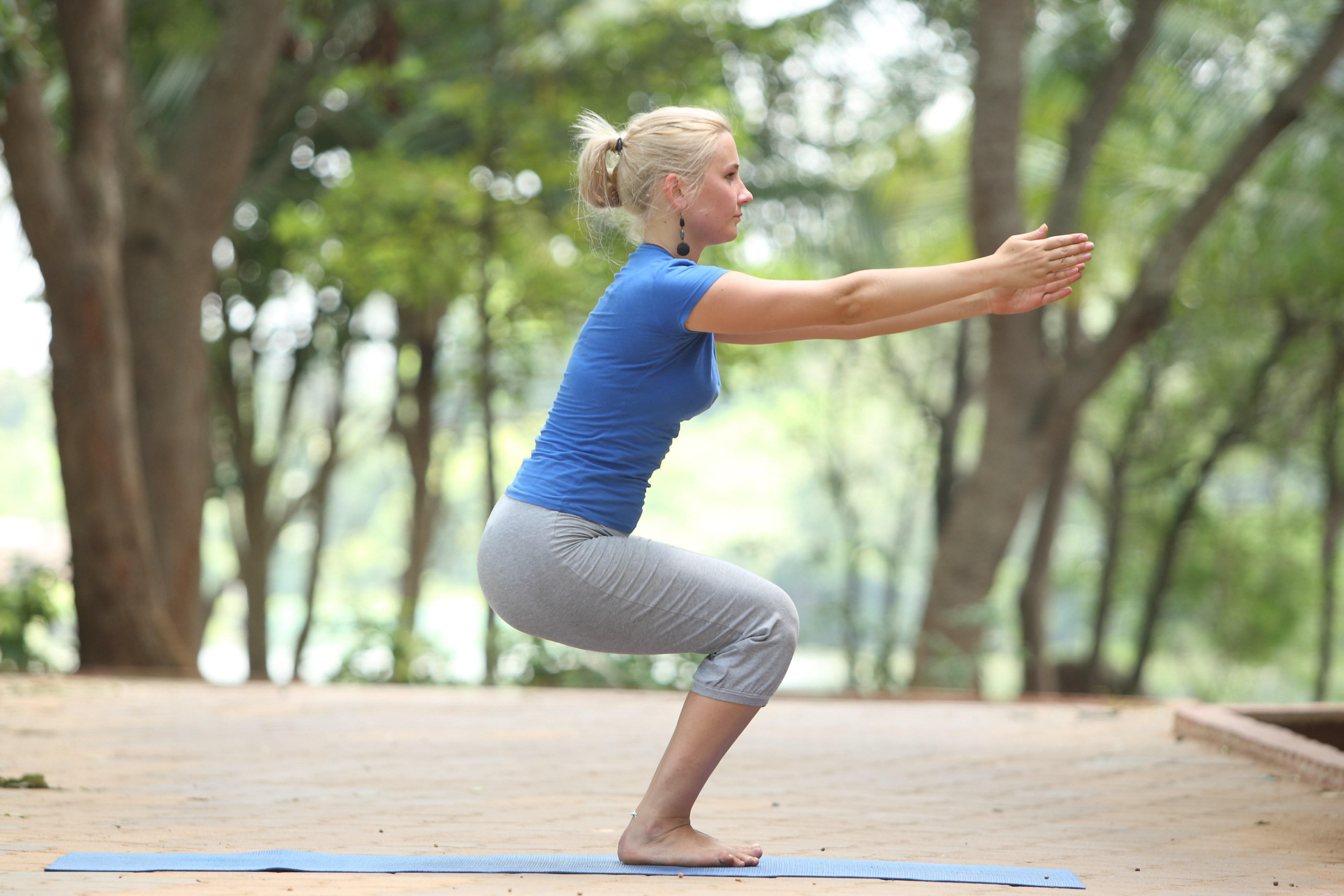 Step-by-Step Approach to the Chair Pose Method
Step-by-Step Approach to the Chair Pose Method
Step 1: Beginning Position: Place yourself in Mountain Pose with your feet together and your arms by your sides.
Step 2: Move Your Arms: Raise your arms over your head, maintain a parallel posture, or bring your palms together.
Step 3: Engage Core: To support your spine, tighten your abdominal muscles.
Step 4: Knee-bending
As though seated, bend your knees and keep your thighs parallel to the floor.
Step 5: Maintain Alignment: Maintain an upright posture and align your knees with your feet.
Step 6: Hold Pose: Breathe deeply while holding for 30 to 1 minute.
Step 7: Exit Pose To return to Mountain Pose, straighten your legs and flex your arms
Advantages of Chair Pose:
- It Builds Muscle and increases the strength of the ankles, core, thighs, calves, and glutes.
- Enhances Posture lessens back discomfort and improves spinal alignment.
Increases Vitality and improves cardiovascular health and endurance. - Increases Adaptabilitystretches the groyne, hips, shoulders, and chest.
- Enhances Equilibrium helps improve proprioception and stability.
- Enhances mental health and concentration by lowering tension and anxiety.
- Promotes Weight loss and increases metabolism by working out big muscle groups.
- Encourages a Healthy Digestive System
stimulates the digestive system and helps with digestion. - Suitable for Every Level both for novice and experienced users.
- Boosts the Respiratory System and Promotes breathing deeply

– Step one foot back, bend the front knee, and lift your arms overhead.
– Strengthens legs, opens hips and chest.
– Step one foot back, bend the front knee, and raise arms overhead.
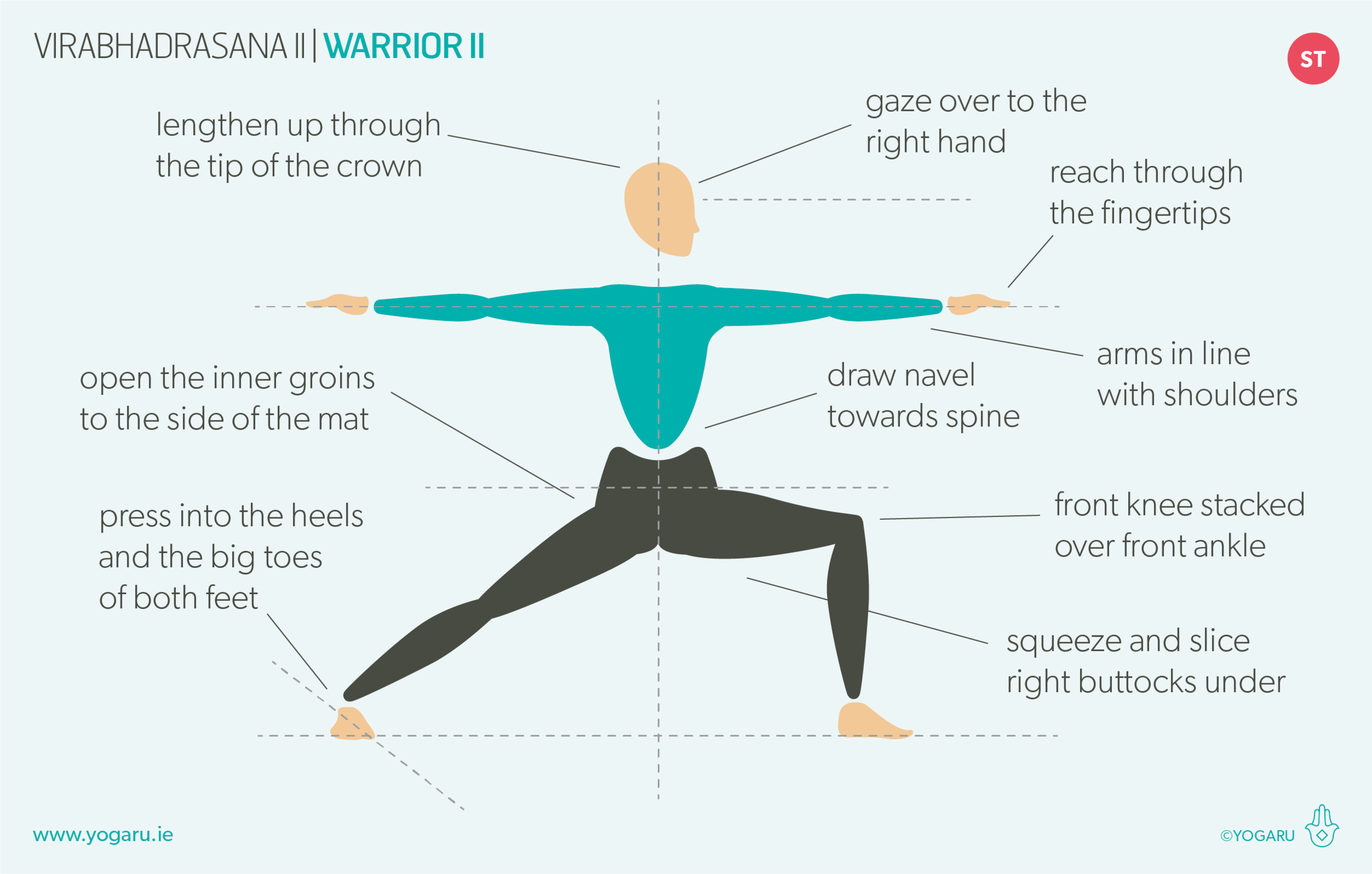
–
Engages legs, and opens hips and shoulders.
– Step one foot back, bend the front knee, and extend arms parallel to the floor.
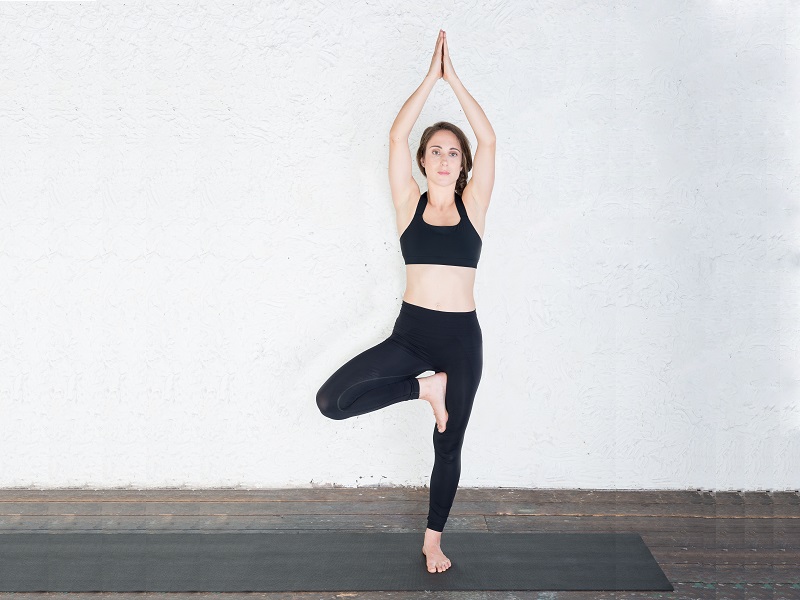
– Enhances balance, and strengthens legs and core.
– Stand on one leg, place the other foot on ankle, calf, or thigh, and bring hands to prayer position.
- Triangle Pose (Trikonasana)
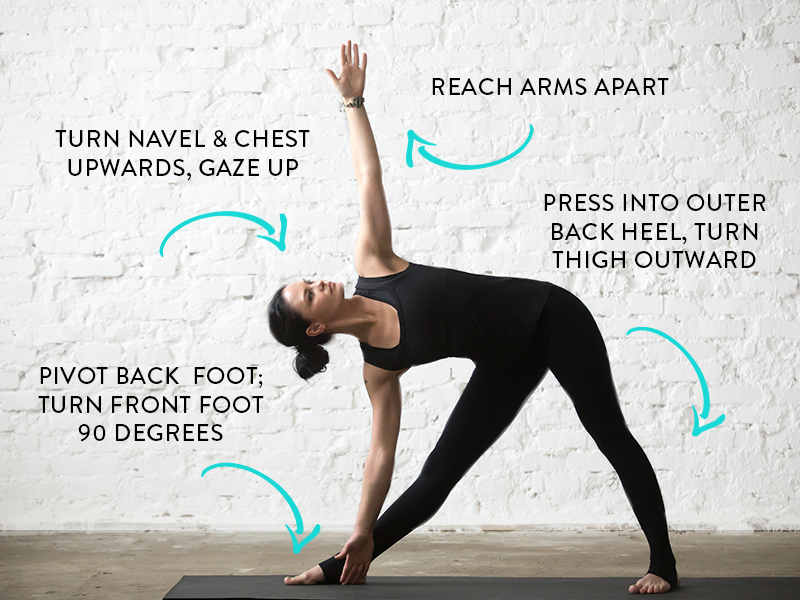
– Stretches legs, hips, and spine.
– Step feet wide apart, extend arms, and reach one hand to the ankle while the other reaches up.
7. Crescent Lunge (Anjaneyasana)
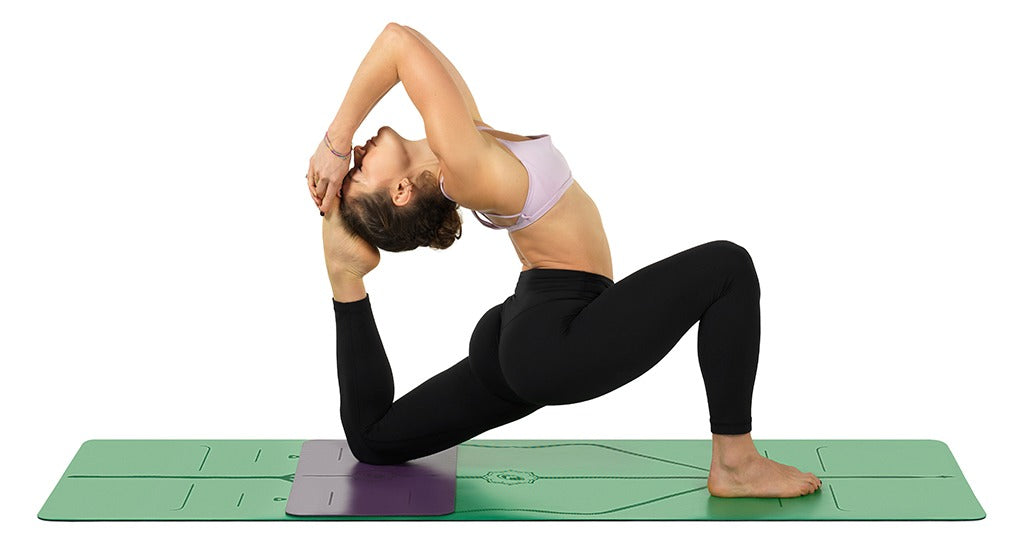
– Strengthens legs, opens hips and chest.
– Step one foot forward into a lunge, raise arms overhead, and keep the back leg straight.

– Improves balance, and strengthens legs and back.
– Stand on one leg, grasp the ankle of the other leg behind you, and extend the arm forward.
By incorporating these standing yoga poses into your practice, you can build a strong foundation, improve your balance and flexibility, and enhance your overall well-being.
Detailed Guide for Practicing Standing Poses
Getting Ready to Perform Standing Poses
Before beginning any standing pose practice, be sure to warm up with gentle stretching and movements. This helps prevent injuries while simultaneously prepping muscles for the poses.
Proper Aligning and Technique
Maintaining proper alignment in standing poses is critical to avoiding strain and reaping their full benefits. Aim to ground yourself with both feet while engaging your core and maintaining a long spine.
Changes and Variations
Each standing pose can be altered to suit individual flexibility and strength levels, using props such as blocks or straps to help maintain balance and alignment.
Integrate Standing Poses Into Your Routine
Integrate standing poses into your yoga practice by developing a flowing sequence that seamlessly moves from pose to pose, such as Mountain Pose and gradually progresses to more difficult ones.
Breathing Techniques: Proper breathing technique is vital when practising standing poses, and deep, steady breaths should be practised to maintain focus and stability in standing poses. Inhale to lengthen the spine while exhaling deepens your pose.
Common Challenges and How to Overcome Them
Maintaining Balance can be a challenging endeavour for beginners. Begin your practice near a wall for support, gradually building balance through focus on an objective point.
Building Strength
Achieving the necessary muscle endurance takes time. Through consistent practice combined with strength-training exercises, muscle endurance can be built over time.
Flexibility Issues: If flexibility is an area of challenge for you, use props to modify poses and gradually increase the range of motion. Stretch regularly to promote overall flexibility.
Advanced Standing Poses for Experienced Practitioners
Half Moon Pose (Ardha Chandrasana)
Half Moon Pose requires balance, strength and flexibility. From Triangle Pose, shift your weight onto your front foot while raising up the back leg and reaching up toward the sky with one arm extended towards it.
Eagle Pose (Garudasana)
Eagle Pose requires balance while strengthening both legs and core. Wrap one leg around the other while one arm lies underneath them both, then bend your knees and drop your hips for optimal results.
Revolved Triangle Pose (Parivrtta Trikonasana)
Triangle Pose can increase flexibility and balance. From the Triangle, rotate your torso clockwise and reach one hand to the ground or block while extending your other arm upward.
Standing Split (Urdhva Prasarita Eka Padasana)
Standing Split can improve flexibility in the hamstrings and hips. From a forward bend position, lift one leg toward the ceiling while keeping hips squared off.
Dancer’s Pose (Natarajasana)
Dancer’s Pose can help improve balance, flexibility, and strength. Simply stand on one leg, grab the inside of the opposite foot with one arm extended upward and forward.
Safety Tips for Practising Standing Poses
Acknowledging Your Body
Pay attention to your body and don’t push beyond its capabilities. Discomfort is normal; pains should be seen as an alert signalling a need to adjust or stop and adjust as soon as possible.
Props and Supports to Use in Propped Areas
Integrate props such as blocks, straps and walls into your practice to maintain optimal alignment and balance.
Warm Up and Cool Down
Before and after practising standing poses, always warm up to prepare and stretch out your muscles and avoid injury. This helps ensure the safety of all parties involved.
FAQs
What Are the Advantages of Standing Poses?
Standing poses can enhance balance, strength, posture and flexibility as well as mental focus and concentration.
How often should I practice standing poses?
Integrate standing poses into your routine at least three to four times every week; consistency will allow you to reap their many benefits.
Can beginner yoga practitioners practice standing poses?
Yes, beginners can begin practising standing poses. Beginning with basic poses like the Mountain Pose and slowly progressing to more complex ones.
What props can I use for standing poses?
Yoga blocks, straps and walls are among the many aids used for balance and alignment purposes.
How can I improve my balance when performing standing poses?
Focus on one point, engage your core, and practice regularly – using walls as support may also help.
Are standing poses suitable for individuals with injuries?
Before trying standing poses if you have injuries, consult with a healthcare provider first and modify as necessary .
Content Disclaimer
The information provided on this website is solely for informational purposes. It does not endorse or recommend any specific therapy, service, product, or treatment and is not a substitute for professional advice from your healthcare provider. This information is not an exhaustive guide on the mentioned therapies, products, or treatments. It is advisable to consult a healthcare professional for diagnoses and answers to medical queries, and to determine the suitability of the discussed therapy, service, product, or treatment for your specific circumstances. The State of Victoria and the Department of Health disclaim any liability concerning users’ reliance on the content provided on this website.